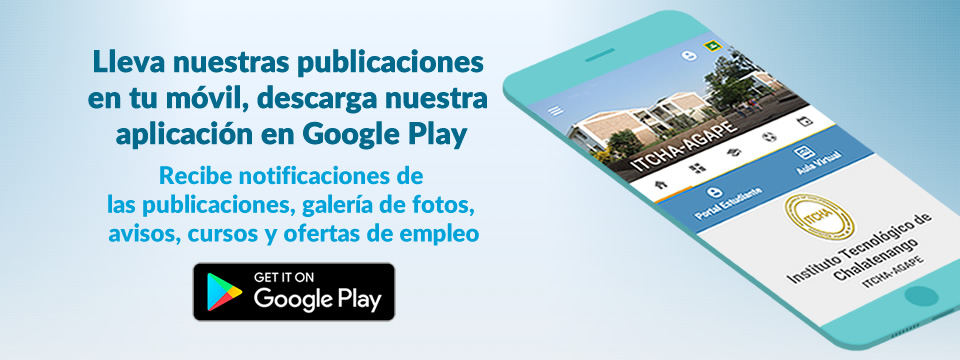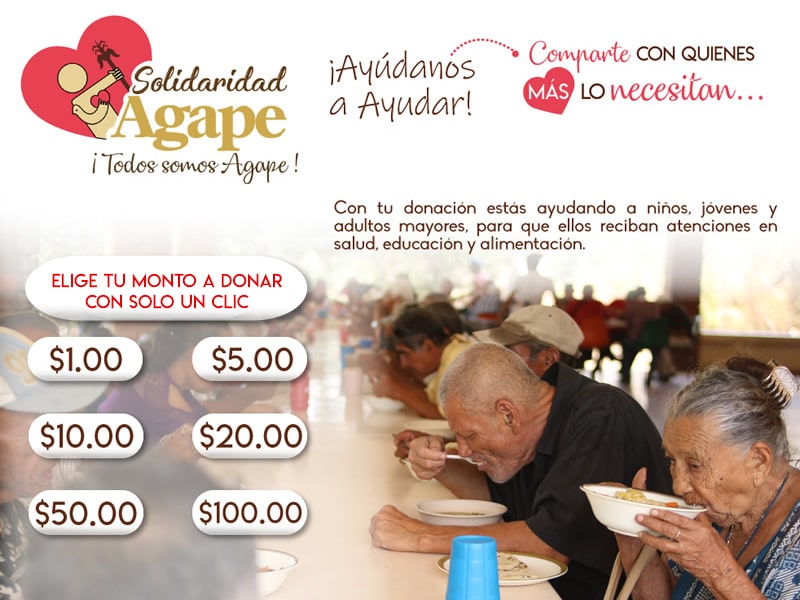Metrics
First Contentful Paint
1.0 s
First Contentful Paint marks the time at which the first text or image is painted. Learn more.
Speed Index
1.5 s
Speed Index shows how quickly the contents of a page are visibly populated. Learn more.
Time to Interactive
4.6 s
Time to interactive is the amount of time it takes for the page to become fully interactive. Learn more.
First Meaningful Paint
1.0 s
First Meaningful Paint measures when the primary content of a page is visible. Learn more.
First CPU Idle
1.1 s
First CPU Idle marks the first time at which the page's main thread is quiet enough to handle input. Learn more.
Max Potential First Input Delay
90 ms
The maximum potential First Input Delay that your users could experience is the duration, in milliseconds, of the longest task. Learn more.
Values are estimated and may vary.
OpportunitiesThese optimizations can speed up your page load.
Opportunity
Estimated Savings
Enable text compression
1.65 s
Enable text compression
1.65 s
Text-based resources should be served with compression (gzip, deflate or brotli) to minimize total network bytes. Learn more.
URL | Size | Potential Savings |
|---|---|---|
/js/lottie_light.min.js (www.itcha.edu.sv) | 146 KB | 106 KB |
/css/bootstrap.itcha.min.css (www.itcha.edu.sv) | 100 KB | 84 KB |
/js/jquery-3.4.0.min.js (www.itcha.edu.sv) | 86 KB | 56 KB |
/analytics.js (www.google-analytics.com) | 43 KB | 26 KB |
/css/font-awesome.min.css (www.itcha.edu.sv) | 30 KB | 23 KB |
/js/bootstrap.min.js (www.itcha.edu.sv) | 28 KB | 21 KB |
https://www.itcha.edu.sv | 26 KB | 19 KB |
/css/style.min.css (www.itcha.edu.sv) | 11 KB | 8 KB |
Serve images in next-gen formats
0.75 s
Serve images in next-gen formats
0.75 s
Image formats like JPEG 2000, JPEG XR, and WebP often provide better compression than PNG or JPEG, which means faster downloads and less data consumption. Learn more.
URL | Size | Potential Savings | |
|---|---|---|---|
 | …medium/ITCHA-sli….jpg (www.itcha.edu.sv) | 107 KB | 65 KB |
 | …slide/solidaridadAgape.jpg (www.itcha.edu.sv) | 89 KB | 26 KB |
 | …medium/ITCHA-sliderAcreditacion.jpg (www.itcha.edu.sv) | 50 KB | 17 KB |
 | …portada/carreras-med.JPG (www.itcha.edu.sv) | 29 KB | 16 KB |
 | …footer/mineducyt2019.jpg (www.itcha.edu.sv) | 19 KB | 15 KB |
 | …footer/agape.jpg (www.itcha.edu.sv) | 16 KB | 13 KB |
 | …portada/continua-med.JPG (www.itcha.edu.sv) | 27 KB | 13 KB |
 | …logos/itcha.png (www.itcha.edu.sv) | 18 KB | 13 KB |
 | …footer/itcha.png (www.itcha.edu.sv) | 12 KB | 8 KB |
Remove unused CSS
0.6 s
Remove unused CSS
0.6 s
Remove dead rules from stylesheets and defer the loading of CSS not used for above-the-fold content to reduce unnecessary bytes consumed by network activity. Learn more.
URL | Size | Potential Savings |
|---|---|---|
/css/bootstrap.itcha.min.css (www.itcha.edu.sv) | 101 KB | 92 KB |
/css/font-awesome.min.css (www.itcha.edu.sv) | 31 KB | 30 KB |
/css/style.min.css (www.itcha.edu.sv) | 11 KB | 9 KB |
Defer offscreen images
0.45 s
Defer offscreen images
0.45 s
Consider lazy-loading offscreen and hidden images after all critical resources have finished loading to lower time to interactive. Learn more.
URL | Size | Potential Savings | |
|---|---|---|---|
 | …medium/ITCHA-sli….jpg (www.itcha.edu.sv) | 107 KB | 107 KB |
 | …portada/carreras-med.JPG (www.itcha.edu.sv) | 29 KB | 29 KB |
 | …portada/continua-med.JPG (www.itcha.edu.sv) | 27 KB | 27 KB |
…medium/ITCHA-20aGraduacionITCHA.JPG (www.itcha.edu.sv) | 20 KB | 20 KB | |
 | …thumbnail/960-curso….jpg (www.itcha.edu.sv) | 18 KB | 18 KB |
…thumbnail/959-IMG_7263.JPG (www.itcha.edu.sv) | 12 KB | 12 KB |
Efficiently encode images
0.3 s
Efficiently encode images
0.3 s
Optimized images load faster and consume less cellular data. Learn more.
URL | Size | Potential Savings | |
|---|---|---|---|
 | …medium/ITCHA-sli….jpg (www.itcha.edu.sv) | 107 KB | 27 KB |
 | …footer/agape.jpg (www.itcha.edu.sv) | 16 KB | 13 KB |
 | …footer/mineducyt2019.jpg (www.itcha.edu.sv) | 19 KB | 12 KB |
 | …portada/carreras-med.JPG (www.itcha.edu.sv) | 29 KB | 12 KB |
 | …portada/continua-med.JPG (www.itcha.edu.sv) | 27 KB | 10 KB |
DiagnosticsMore information about the performance of your application.
Serve static assets with an efficient cache policy
1 resource found
A long cache lifetime can speed up repeat visits to your page. Learn more.
URL | Cache TTL | Size |
|---|---|---|
/analytics.js (www.google-analytics.com) | 2 h | 43 KB |
Minimize main-thread work
2.1 s
Consider reducing the time spent parsing, compiling and executing JS. You may find delivering smaller JS payloads helps with this.
Category | Time Spent |
|---|---|
Other | 717 ms |
Style & Layout | 595 ms |
Rendering | 359 ms |
Script Evaluation | 334 ms |
Parse HTML & CSS | 80 ms |
Script Parsing & Compilation | 42 ms |
Minimize Critical Requests Depth
11 chains found
The Critical Request Chains below show you what resources are loaded with a high priority. Consider reducing the length of chains, reducing the download size of resources, or deferring the download of unnecessary resources to improve page load. Learn more.
Maximum critical path latency: 4,140 ms
Initial Navigation
()
/
(www.itcha.edu.sv)
/css/bootstrap.itcha.min.css
(www.itcha.edu.sv)
- 70 ms, 100.74 KB
/css/font-awesome.min.css
(www.itcha.edu.sv)
- 90 ms, 30.73 KB
/css/style.min.css
(www.itcha.edu.sv)
- 90 ms, 11.29 KB
/js/jquery-3.4.0.min.js
(www.itcha.edu.sv)
- 1,380 ms, 86.55 KB
/js/bootstrap.min.js
(www.itcha.edu.sv)
- 320 ms, 28.86 KB
/js/lottie_light.min.js
(www.itcha.edu.sv)
- 1,370 ms, 146.69 KB
/js/scripts.min.js
(www.itcha.edu.sv)
- 10 ms, 2.89 KB
/js/jquery.rwdImageMaps.min.js
(www.itcha.edu.sv)
- 310 ms, 1.54 KB
/fonts/fontawesome-webfont.woff2?v=4.7.0
(www.itcha.edu.sv)
- 1,790 ms, 75.77 KB
…roboto/roboto.min.woff2
(www.itcha.edu.sv)
- 620 ms, 15.78 KB
…magra/magra.min.woff2
(www.itcha.edu.sv)
- 640 ms, 9.16 KB
/manifest.json
(www.itcha.edu.sv)
- 70 ms, 1.57 KB
Keep request counts low and transfer sizes small
35 requests • 1,069 KB
To set budgets for the quantity and size of page resources, add a budget.json file. Learn more.
Resource Type | Requests | Transfer Size |
|---|---|---|
Total | 35 | 1,069 KB |
Image | 19 | 466 KB |
Script | 6 | 310 KB |
Stylesheet | 3 | 143 KB |
Font | 3 | 101 KB |
Document | 1 | 26 KB |
Other | 3 | 23 KB |
Media | 0 | 0 KB |
Third-party | 2 | 43 KB |
Passed audits
(14)
Passed audits
(14)
Eliminate render-blocking resources
Resources are blocking the first paint of your page. Consider delivering critical JS/CSS inline and deferring all non-critical JS/styles. Learn more.
Properly size images
Serve images that are appropriately-sized to save cellular data and improve load time. Learn more.
Minify CSS
Minifying CSS files can reduce network payload sizes. Learn more.
Minify JavaScript
Minifying JavaScript files can reduce payload sizes and script parse time. Learn more.
Preconnect to required origins
Consider adding preconnect or dns-prefetch resource hints to establish early connections to important third-party origins. Learn more.
Server response times are low (TTFB)
Root document took 240 ms
Time To First Byte identifies the time at which your server sends a response. Learn more.
Avoid multiple page redirects
Redirects introduce additional delays before the page can be loaded. Learn more.
Preload key requests
Consider using <link rel=preload> to prioritize fetching resources that are currently requested later in page load. Learn more.
Use video formats for animated content
Large GIFs are inefficient for delivering animated content. Consider using MPEG4/WebM videos for animations and PNG/WebP for static images instead of GIF to save network bytes. Learn more
Avoids enormous network payloads
Total size was 1,069 KB
Large network payloads cost users real money and are highly correlated with long load times. Learn more.
URL | Size |
|---|---|
/js/lottie_light.min.js (www.itcha.edu.sv) | 147 KB |
…medium/ITCHA-sli….jpg (www.itcha.edu.sv) | 108 KB |
/css/bootstrap.itcha.min.css (www.itcha.edu.sv) | 101 KB |
…slide/solidaridadAgape.jpg (www.itcha.edu.sv) | 90 KB |
/js/jquery-3.4.0.min.js (www.itcha.edu.sv) | 87 KB |
/fonts/fontawesome-webfont.woff2?v=4.7.0 (www.itcha.edu.sv) | 76 KB |
…medium/ITCHA-sliderAcreditacion.jpg (www.itcha.edu.sv) | 51 KB |
/analytics.js (www.google-analytics.com) | 43 KB |
/css/font-awesome.min.css (www.itcha.edu.sv) | 31 KB |
…portada/carreras-med.JPG (www.itcha.edu.sv) | 30 KB |
Avoids an excessive DOM size
363 elements
Browser engineers recommend pages contain fewer than ~1,500 DOM elements. The sweet spot is a tree depth < 32 elements and fewer than 60 children/parent element. A large DOM can increase memory usage, cause longer style calculations, and produce costly layout reflows. Learn more.
Statistic | Element | Value |
|---|---|---|
Total DOM Elements | 363 | |
Maximum DOM Depth | <a href="https://www.itcha.edu.sv/nosotros"> | 12 |
Maximum Child Elements | <body> | 19 |
User Timing marks and measures
Consider instrumenting your app with the User Timing API to measure your app's real-world performance during key user experiences. Learn more.
JavaScript execution time
0.2 s
Consider reducing the time spent parsing, compiling, and executing JS. You may find delivering smaller JS payloads helps with this. Learn more.
URL | Total CPU Time | Script Evaluation | Script Parse |
|---|---|---|---|
Other | 1,787 ms | 38 ms | 2 ms |
/js/jquery-3.4.0.min.js (www.itcha.edu.sv) | 118 ms | 108 ms | 7 ms |
/analytics.js (www.google-analytics.com) | 71 ms | 67 ms | 4 ms |
All text remains visible during webfont loads
Leverage the font-display CSS feature to ensure text is user-visible while webfonts are loading. Learn more.
These checks highlight opportunities to improve the accessibility of your web app. Only a subset of accessibility issues can be automatically detected so manual testing is also encouraged.
ContrastThese are opportunities to improve the legibility of your content.
Background and foreground colors do not have a sufficient contrast ratio.
Low-contrast text is difficult or impossible for many users to read. Learn more.
Failing Elements |
|---|
Instituto Tecnológico de Chalatenango <h1 class="titulo-sitio">Instituto Tecnológico de Chalatenango</h1> |
Leer mas... <a class="btn btn-primary btn-sm" aria-label="Leer más..." href="ventajas" role="button">Leer mas...</a> |
Leer mas... <a class="btn btn-primary btn-sm" href="carreras" role="button" aria-label="Leer más...">Leer mas...</a> |
Leer mas... <a class="btn btn-primary btn-sm" aria-label="Leer más..." href="cursos" role="button">Leer mas...</a> |
Portal Estudiante <a href="https://portal.itcha.edu.sv" rel="noopener" target="_blank" title="Consulta de notas en línea y actualización de perfil" class="btn btn-primary btn-primary texto-btn col-md-2 col-sm-4 col-xs-6"><span class="fa fa-search fa-2x"></span> <br>Portal Estudiante</a> |
Becas MINED <a href="https://www.itcha.edu.sv/becas-mined" rel="noopener" target="_self" title="Toda la información para obtener una beca del Ministerio de Educación" class="btn btn-primary btn-primary texto-btn col-md-2 col-sm-4 col-xs-6"><span class="fa fa-graduation-cap fa-2x"></span> <br>Becas MINED</a> |
Aula Virtual Classroom <a href="http://aulavirtual.itcha.edu.sv/" rel="noopener" target="_blank" title="Apoya tus clases presenciales con recursos on-line" class="btn btn-primary btn-primary texto-btn col-md-2 col-sm-4 col-xs-6"><span class="fa fa-user fa-2x"></span> <br>Aula Virtual Classroom</a> |
Aula Virtual Moodle <a href="https://moodle.itcha.edu.sv" rel="noopener" target="_blank" title="Apoyo e-learning con la plataforma Moodle" class="btn btn-primary btn-primary texto-btn col-md-2 col-sm-4 col-xs-6"><span class="fa fa-user fa-2x"></span> <br>Aula Virtual Moodle</a> |
Sistema de SS y PP <a href="https://sspp.itcha.edu.sv/" rel="noopener" target="_blank" title="Sistema de servicio social y práctica profesional" class="btn btn-primary btn-primary texto-btn col-md-2 col-sm-4 col-xs-6"><span class="fa fa-bookmark fa-2x"></span> <br>Sistema de SS y PP</a> |
Correo Institucional <a href="http://correo.itcha.edu.sv" rel="noopener" target="_blank" title="Mi cuenta de GMail" class="btn btn-primary btn-primary texto-btn col-md-2 col-sm-4 col-xs-6"><span class="fa fa-envelope fa-2x"></span> <br>Correo Institucional</a> |
Seguir leyendo... <a href="https://www.itcha.edu.sv/curso/960" class="btn btn-primary btn-sm center" role="button">Seguir leyendo...</a> |
Seguir leyendo... <a href="https://www.itcha.edu.sv/noticia/959" class="btn btn-primary btn-sm center" role="button">Seguir leyendo...</a> |
Additional items to manually check
(11)
These items address areas which an automated testing tool cannot cover. Learn more in our guide on conducting an accessibility review.
Additional items to manually check
(11)
These items address areas which an automated testing tool cannot cover. Learn more in our guide on conducting an accessibility review.
The page has a logical tab order
Tabbing through the page follows the visual layout. Users cannot focus elements that are offscreen. Learn more.
Interactive controls are keyboard focusable
Custom interactive controls are keyboard focusable and display a focus indicator. Learn more.
Interactive elements indicate their purpose and state
Interactive elements, such as links and buttons, should indicate their state and be distinguishable from non-interactive elements. Learn more.
The user's focus is directed to new content added to the page
If new content, such as a dialog, is added to the page, the user's focus is directed to it. Learn more.
User focus is not accidentally trapped in a region
A user can tab into and out of any control or region without accidentally trapping their focus. Learn more.
Custom controls have associated labels
Custom interactive controls have associated labels, provided by aria-label or aria-labelledby. Learn more.
Custom controls have ARIA roles
Custom interactive controls have appropriate ARIA roles. Learn more.
Visual order on the page follows DOM order
DOM order matches the visual order, improving navigation for assistive technology. Learn more.
Offscreen content is hidden from assistive technology
Offscreen content is hidden with display: none or aria-hidden=true. Learn more.
Headings don't skip levels
Headings are used to create an outline for the page and heading levels are not skipped. Learn more.
HTML5 landmark elements are used to improve navigation
Landmark elements (<main>, <nav>, etc.) are used to improve the keyboard navigation of the page for assistive technology. Learn more.
Passed audits
(18)
Passed audits
(18)
[aria-*] attributes match their roles
[aria-*] attributes match their roles
Each ARIA `role` supports a specific subset of `aria-*` attributes. Mismatching these invalidates the `aria-*` attributes. Learn more.
[role]s have all required [aria-*] attributes
[role]s have all required [aria-*] attributes
Some ARIA roles have required attributes that describe the state of the element to screen readers. Learn more.
Elements with [role] that require specific children [role]s, are present
[role] that require specific children [role]s, are present
Some ARIA parent roles must contain specific child roles to perform their intended accessibility functions. Learn more.
[role]s are contained by their required parent element
[role]s are contained by their required parent element
Some ARIA child roles must be contained by specific parent roles to properly perform their intended accessibility functions. Learn more.
[role] values are valid
[role] values are valid
ARIA roles must have valid values in order to perform their intended accessibility functions. Learn more.
[aria-*] attributes have valid values
[aria-*] attributes have valid values
Assistive technologies, like screen readers, can't interpret ARIA attributes with invalid values. Learn more.
[aria-*] attributes are valid and not misspelled
[aria-*] attributes are valid and not misspelled
Assistive technologies, like screen readers, can't interpret ARIA attributes with invalid names. Learn more.
Buttons have an accessible name
When a button doesn't have an accessible name, screen readers announce it as "button", making it unusable for users who rely on screen readers. Learn more.
The page contains a heading, skip link, or landmark region
Adding ways to bypass repetitive content lets keyboard users navigate the page more efficiently. Learn more.
Document has a <title> element
<title> element
The title gives screen reader users an overview of the page, and search engine users rely on it heavily to determine if a page is relevant to their search. Learn more.
[id] attributes on the page are unique
[id] attributes on the page are unique
The value of an id attribute must be unique to prevent other instances from being overlooked by assistive technologies. Learn more.
<html> element has a [lang] attribute
<html> element has a [lang] attribute
If a page doesn't specify a lang attribute, a screen reader assumes that the page is in the default language that the user chose when setting up the screen reader. If the page isn't actually in the default language, then the screen reader might not announce the page's text correctly. Learn more.
<html> element has a valid value for its [lang] attribute
<html> element has a valid value for its [lang] attribute
Specifying a valid BCP 47 language helps screen readers announce text properly. Learn more.
Image elements have [alt] attributes
[alt] attributes
Informative elements should aim for short, descriptive alternate text. Decorative elements can be ignored with an empty alt attribute. Learn more.
Links have a discernible name
Link text (and alternate text for images, when used as links) that is discernible, unique, and focusable improves the navigation experience for screen reader users. Learn more.
Lists contain only <li> elements and script supporting elements (<script> and <template>).
<li> elements and script supporting elements (<script> and <template>).
Screen readers have a specific way of announcing lists. Ensuring proper list structure aids screen reader output. Learn more.
List items (<li>) are contained within <ul> or <ol> parent elements
<li>) are contained within <ul> or <ol> parent elements
Screen readers require list items (`<li>`) to be contained within a parent `<ul>` or `<ol>` to be announced properly. Learn more.
[user-scalable="no"] is not used in the <meta name="viewport"> element and the [maximum-scale] attribute is not less than 5.
[user-scalable="no"] is not used in the <meta name="viewport"> element and the [maximum-scale] attribute is not less than 5.
Disabling zooming is problematic for users with low vision who rely on screen magnification to properly see the contents of a web page. Learn more.
Not applicable
(16)
Not applicable
(16)
[accesskey] values are unique
[accesskey] values are unique
Access keys let users quickly focus a part of the page. For proper navigation, each access key must be unique. Learn more.
<audio> elements contain a <track> element with [kind="captions"]
<audio> elements contain a <track> element with [kind="captions"]
Captions make audio elements usable for deaf or hearing-impaired users, providing critical information such as who is talking, what they're saying, and other non-speech information. Learn more.
<dl>'s contain only properly-ordered <dt> and <dd> groups, <script> or <template> elements.
<dl>'s contain only properly-ordered <dt> and <dd> groups, <script> or <template> elements.
When definition lists are not properly marked up, screen readers may produce confusing or inaccurate output. Learn more.
Definition list items are wrapped in <dl> elements
<dl> elements
Definition list items (`<dt>` and `<dd>`) must be wrapped in a parent `<dl>` element to ensure that screen readers can properly announce them. Learn more.
<frame> or <iframe> elements have a title
<frame> or <iframe> elements have a title
Screen reader users rely on frame titles to describe the contents of frames. Learn more.
<input type="image"> elements have [alt] text
<input type="image"> elements have [alt] text
When an image is being used as an `<input>` button, providing alternative text can help screen reader users understand the purpose of the button. Learn more.
Form elements have associated labels
Labels ensure that form controls are announced properly by assistive technologies, like screen readers. Learn more.
Presentational <table> elements avoid using <th>, <caption> or the [summary] attribute.
<table> elements avoid using <th>, <caption> or the [summary] attribute.
A table being used for layout purposes should not include data elements, such as the th or caption elements or the summary attribute, because this can create a confusing experience for screen reader users. Learn more.
The document does not use <meta http-equiv="refresh">
<meta http-equiv="refresh">
Users do not expect a page to refresh automatically, and doing so will move focus back to the top of the page. This may create a frustrating or confusing experience. Learn more.
<object> elements have [alt] text
<object> elements have [alt] text
Screen readers cannot translate non-text content. Adding alt text to `<object>` elements helps screen readers convey meaning to users. Learn more.
No element has a [tabindex] value greater than 0
[tabindex] value greater than 0
A value greater than 0 implies an explicit navigation ordering. Although technically valid, this often creates frustrating experiences for users who rely on assistive technologies. Learn more.
Cells in a <table> element that use the [headers] attribute only refer to other cells of that same table.
<table> element that use the [headers] attribute only refer to other cells of that same table.
Screen readers have features to make navigating tables easier. Ensuring `<td>` cells using the `[headers]` attribute only refer to other cells in the same table may improve the experience for screen reader users. Learn more.
<th> elements and elements with [role="columnheader"/"rowheader"] have data cells they describe.
<th> elements and elements with [role="columnheader"/"rowheader"] have data cells they describe.
Screen readers have features to make navigating tables easier. Ensuring table headers always refer to some set of cells may improve the experience for screen reader users. Learn more.
[lang] attributes have a valid value
[lang] attributes have a valid value
Specifying a valid BCP 47 language on elements helps ensure that text is pronounced correctly by a screen reader. Learn more.
<video> elements contain a <track> element with [kind="captions"]
<video> elements contain a <track> element with [kind="captions"]
When a video provides a caption it is easier for deaf and hearing impaired users to access its information. Learn more.
<video> elements contain a <track> element with [kind="description"]
<video> elements contain a <track> element with [kind="description"]
Audio descriptions provide relevant information for videos that dialogue cannot, such as facial expressions and scenes. Learn more.
Does not use HTTP/2 for all of its resources
33 requests not served via HTTP/2
HTTP/2 offers many benefits over HTTP/1.1, including binary headers, multiplexing, and server push. Learn more.
URL | Protocol |
|---|---|
https://www.itcha.edu.sv | http/1.1 |
…slide/solidaridadAgape.jpg (www.itcha.edu.sv) | http/1.1 |
…logos/itcha.png (www.itcha.edu.sv) | http/1.1 |
…logos/voy.png (www.itcha.edu.sv) | http/1.1 |
…medium/ITCHA-sliderAcreditacion.jpg (www.itcha.edu.sv) | http/1.1 |
…medium/ITCHA-sli….jpg (www.itcha.edu.sv) | http/1.1 |
…medium/ITCHA-20aGraduacionITCHA.JPG (www.itcha.edu.sv) | http/1.1 |
…portada/ventajas-med.JPG (www.itcha.edu.sv) | http/1.1 |
…portada/carreras-med.JPG (www.itcha.edu.sv) | http/1.1 |
…portada/continua-med.JPG (www.itcha.edu.sv) | http/1.1 |
…thumbnail/960-curso….jpg (www.itcha.edu.sv) | http/1.1 |
…thumbnail/959-IMG_7263.JPG (www.itcha.edu.sv) | http/1.1 |
…footer/itcha.png (www.itcha.edu.sv) | http/1.1 |
…footer/agape.jpg (www.itcha.edu.sv) | http/1.1 |
…footer/mineducyt2019.jpg (www.itcha.edu.sv) | http/1.1 |
…footer/megatec.png (www.itcha.edu.sv) | http/1.1 |
…footer/logocda.jpg (www.itcha.edu.sv) | http/1.1 |
…logos/enviaragp.png (www.itcha.edu.sv) | http/1.1 |
/css/bootstrap.itcha.min.css (www.itcha.edu.sv) | http/1.1 |
/css/font-awesome.min.css (www.itcha.edu.sv) | http/1.1 |
/css/style.min.css (www.itcha.edu.sv) | http/1.1 |
/js/jquery-3.4.0.min.js (www.itcha.edu.sv) | http/1.1 |
/js/bootstrap.min.js (www.itcha.edu.sv) | http/1.1 |
/js/lottie_light.min.js (www.itcha.edu.sv) | http/1.1 |
/js/scripts.min.js (www.itcha.edu.sv) | http/1.1 |
/js/jquery.rwdImageMaps.min.js (www.itcha.edu.sv) | http/1.1 |
/fonts/fontawesome-webfont.woff2?v=4.7.0 (www.itcha.edu.sv) | http/1.1 |
…roboto/roboto.min.woff2 (www.itcha.edu.sv) | http/1.1 |
…magra/magra.min.woff2 (www.itcha.edu.sv) | http/1.1 |
/images/fondo-icon-big.jpg (www.itcha.edu.sv) | http/1.1 |
/index.php (www.itcha.edu.sv) | http/1.1 |
/manifest.json (www.itcha.edu.sv) | http/1.1 |
…logos/apple-touch-icon-152x152.png (www.itcha.edu.sv) | http/1.1 |
Passed audits
(14)
Passed audits
(14)
Avoids Application Cache
Application Cache is deprecated. Learn more.
Uses HTTPS
All sites should be protected with HTTPS, even ones that don't handle sensitive data. HTTPS prevents intruders from tampering with or passively listening in on the communications between your app and your users, and is a prerequisite for HTTP/2 and many new web platform APIs. Learn more.
Uses passive listeners to improve scrolling performance
Consider marking your touch and wheel event listeners as `passive` to improve your page's scroll performance. Learn more.
Avoids document.write()
document.write()
For users on slow connections, external scripts dynamically injected via `document.write()` can delay page load by tens of seconds. Learn more.
Links to cross-origin destinations are safe
Add `rel="noopener"` or `rel="noreferrer"` to any external links to improve performance and prevent security vulnerabilities. Learn more.
Avoids requesting the geolocation permission on page load
Users are mistrustful of or confused by sites that request their location without context. Consider tying the request to user gestures instead. Learn more.
Page has the HTML doctype
Specifying a doctype prevents the browser from switching to quirks-mode.Read more on the MDN Web Docs page
Avoids front-end JavaScript libraries with known security vulnerabilities
Some third-party scripts may contain known security vulnerabilities that are easily identified and exploited by attackers. Learn more.
Detected JavaScript libraries
All front-end JavaScript libraries detected on the page.
Name | Version |
|---|---|
jQuery | 3.4.0 |
Avoids requesting the notification permission on page load
Users are mistrustful of or confused by sites that request to send notifications without context. Consider tying the request to user gestures instead. Learn more.
Avoids deprecated APIs
Deprecated APIs will eventually be removed from the browser. Learn more.
Allows users to paste into password fields
Preventing password pasting undermines good security policy. Learn more.
No browser errors logged to the console
Errors logged to the console indicate unresolved problems. They can come from network request failures and other browser concerns.
Displays images with correct aspect ratio
Image display dimensions should match natural aspect ratio. Learn more.
These checks ensure that your page is optimized for search engine results ranking. There are additional factors Lighthouse does not check that may affect your search ranking. Learn more.
Additional items to manually check
(1)
Run these additional validators on your site to check additional SEO best practices.
Additional items to manually check
(1)
Run these additional validators on your site to check additional SEO best practices.
Structured data is valid
Run the Structured Data Testing Tool and the Structured Data Linter to validate structured data. Learn more.
Passed audits
(12)
Passed audits
(12)
Has a <meta name="viewport"> tag with width or initial-scale
<meta name="viewport"> tag with width or initial-scale
Add a viewport meta tag to optimize your app for mobile screens. Learn more.
Document has a <title> element
<title> element
The title gives screen reader users an overview of the page, and search engine users rely on it heavily to determine if a page is relevant to their search. Learn more.
Document has a meta description
Meta descriptions may be included in search results to concisely summarize page content. Learn more.
Page has successful HTTP status code
Pages with unsuccessful HTTP status codes may not be indexed properly. Learn more.
Links have descriptive text
Descriptive link text helps search engines understand your content. Learn more.
Page isn’t blocked from indexing
Search engines are unable to include your pages in search results if they don't have permission to crawl them. Learn more.
robots.txt is valid
If your robots.txt file is malformed, crawlers may not be able to understand how you want your website to be crawled or indexed.
Image elements have [alt] attributes
[alt] attributes
Informative elements should aim for short, descriptive alternate text. Decorative elements can be ignored with an empty alt attribute. Learn more.
Document has a valid hreflang
hreflang
hreflang links tell search engines what version of a page they should list in search results for a given language or region. Learn more.
Document uses legible font sizes
97.59% legible text
Font sizes less than 12px are too small to be legible and require mobile visitors to “pinch to zoom” in order to read. Strive to have >60% of page text ≥12px. Learn more.
Source | Selector | % of Page Text | Font Size |
|---|---|---|---|
/css/bootstrap.itcha.min.css:1:5454 (www.itcha.edu.sv) | small, .small | 2.05% | 11px |
/css/style.min.css:1:1901 (www.itcha.edu.sv) | .navbar-header button | 0.36% | 11px |
Legible text | 97.59% | ≥ 12px |
Document avoids plugins
Search engines can't index plugin content, and many devices restrict plugins or don't support them. Learn more.
Tap targets are sized appropriately
100% appropriately sized tap targets
Interactive elements like buttons and links should be large enough (48x48px), and have enough space around them, to be easy enough to tap without overlapping onto other elements. Learn more.
Not applicable
(1)
Not applicable
(1)
Document has a valid rel=canonical
rel=canonical
Canonical links suggest which URL to show in search results. Learn more.
These checks validate the aspects of a Progressive Web App. Learn more.
Fast and reliable
Page load is fast enough on mobile networks
A fast page load over a cellular network ensures a good mobile user experience. Learn more.
Current page responds with a 200 when offline
If you're building a Progressive Web App, consider using a service worker so that your app can work offline. Learn more.
start_url responds with a 200 when offline
A service worker enables your web app to be reliable in unpredictable network conditions. Learn more.
Installable
Uses HTTPS
All sites should be protected with HTTPS, even ones that don't handle sensitive data. HTTPS prevents intruders from tampering with or passively listening in on the communications between your app and your users, and is a prerequisite for HTTP/2 and many new web platform APIs. Learn more.
Registers a service worker that controls page and start_url
The service worker is the technology that enables your app to use many Progressive Web App features, such as offline, add to homescreen, and push notifications. Learn more.
Web app manifest meets the installability requirements
Browsers can proactively prompt users to add your app to their homescreen, which can lead to higher engagement. Learn more.
PWA Optimized
Redirects HTTP traffic to HTTPS
If you've already set up HTTPS, make sure that you redirect all HTTP traffic to HTTPS. Learn more.
Configured for a custom splash screen
A themed splash screen ensures a high-quality experience when users launch your app from their homescreens. Learn more.
Sets an address-bar theme color
The browser address bar can be themed to match your site. Learn more.
Content is sized correctly for the viewport
If the width of your app's content doesn't match the width of the viewport, your app might not be optimized for mobile screens. Learn more.
Has a <meta name="viewport"> tag with width or initial-scale
<meta name="viewport"> tag with width or initial-scale
Add a viewport meta tag to optimize your app for mobile screens. Learn more.
Contains some content when JavaScript is not available
Your app should display some content when JavaScript is disabled, even if it's just a warning to the user that JavaScript is required to use the app. Learn more.
Provides a valid apple-touch-icon
apple-touch-icon
For ideal appearance on iOS when users add to the home screen, define an apple-touch-icon. It must point to a non-transparent 192px (or 180px) square PNG. Learn More.
Additional items to manually check
(3)
These checks are required by the baseline PWA Checklist but are not automatically checked by Lighthouse. They do not affect your score but it's important that you verify them manually.
Additional items to manually check
(3)
These checks are required by the baseline PWA Checklist but are not automatically checked by Lighthouse. They do not affect your score but it's important that you verify them manually.
Site works cross-browser
To reach the most number of users, sites should work across every major browser. Learn more.
Page transitions don't feel like they block on the network
Transitions should feel snappy as you tap around, even on a slow network, a key to perceived performance. Learn more.
Each page has a URL
Ensure individual pages are deep linkable via the URLs and that URLs are unique for the purpose of shareability on social media. Learn more.